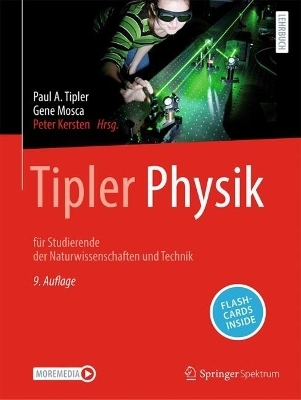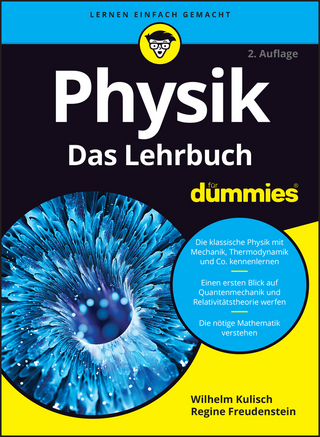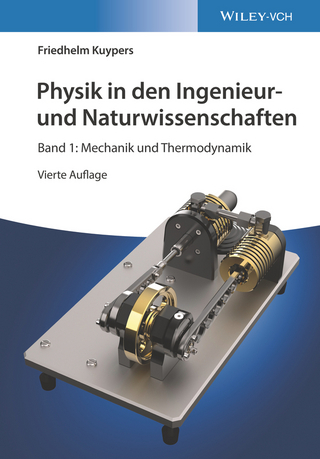
Fundamental Interactions
Kluwer Academic/Plenum Publishers (Verlag)
978-0-306-41116-8 (ISBN)
We owe many thanks to all those who have made this Summer Institute possible! Thanks are due to the Scientific Committee of NATO and its President for a generous grant and especially to the head of the Advanced Study Institute Program, Dr. R. Chabbal and his collabora- tors for their constant help and encouragements.
Functional Methods in Quantum Field Theory.- I. Introduction.- II. Path Integrals.- III. Feynman Diagrams.- IV. Fermions.- V. Ghosts.- References.- to Electro-Weak Interactions.- I. Introduction.- II. Gauge Invariance.- III. Spontaneous Symmetry Breaking.- IV. The Standard Model.- V. Anomalies.- VI. Fermi Mass Matrix.- VII. CP.- VIII. Things to look for.- References.- The Weak Interactions in the Confining Phase.- References.- Heavy Quark Systems.- Electron-Positron Interactions at High Energies.- I. Introduction.- II. PETRA and PEP.- III. The structure of Leptons.- IV. Weak Neutral Current Contributions to Lepton Pair Production.- V. Search for new Particles.- VI. Jet Formation in e+e? annihilation.- VII. Quark and Gluon Fragmentation.- References.- e+e? Collisions at CESR.- I. CESR, CLEO and CUSB.- II. Upsilon bound state spectroscopy and tests of QCD.- III. B Meson Decays and Tests of the standard weak interaction.- References.- e+e? Physics at Very Large Energies.- O. Abstract.- I. Introduction.- II. Interference between electromagnetic and neutral weak currents.- III. Z° Decays.- IV. W+W? Production.- V. Higgs Bosons.- VI. Conclusions.- References.- Theoretical Aspects in Perturbative QCD.- I. Introduction.- II. The LLA and beyond.- III. The Photon Structure Functions.- IV. Prescription and Scale dependence for the running coupling.- V. Spacelike and Timelike Structure Functions beyond LLA.- VI. An Asymptotic Formula for Multiplicities.- VII. The Sudakov Form Factor of Partons.- VIII. Examples of Doubly Logarithmic Effects of Physical Interest.- References.- Dynamical Mass Generation For Quarks and Leptons.- I. Introduction.- II. Technicolour and its Extension.- III. ETC Issues, Answers and Problems.- IV. Alternatives to ETC ?.- V. Composite Quarks andLeptons.- References.- Quark Confinement and Lepton Liberation in an Anisotropic Space Time.- I. Introduction.- II. Is Hadron Dynamics 2-dimensional ?.- III. The Anisotropic Space-Time.- IV. The Anisotropic Yang-Mills Interactions.- V. Quantum Fluctuations and the Role of Chirality.- VI. Gauge Invariance Restored.- VII. The Structure of Strong Interactions.- References.- Physics at Collider Energies.- I. Introduction.- II. Hunting the Weak Vector Bosons.- III. The Dominant Hadron Processes.- IV. Jet Phenomena.- V. Conclusion.- References.- Proton Lifetime Experiments.- I. Theoretical Preamble.- II. The Experimental Problem.- III. Status of N Decay Studies.- IV. The Future.- V. Other Possibilities Offered by these Set-Ups.- VI. n — $$/rm /bar{n}$$ Oscillations.- References.- Quantum Field Theory and Cosmology.- I. Introduction.- II. The Hot Big Bang Theory.- III. Entropy Generation.- IV. Quantum Gravity.- References.- The Confinement Phenomenon in Quantum Field Theory.- O. Abstract.- I. Introduction.- II. Scalar Field Theory.- III. Bose Condensation.- IV. Goldstone Particles.- V. Higgs Mechanism.- VI. Vortex Tubes.- VII. Dirac’s Magnetic Monopoles.- VIII. Unitary Gauge.- IX. Phantom Solitons.- X. Non-Abelian Gauge Theory.- XI. Unitary Gauge.- XII. A Topological Object.- XIII. The Macroscopic Variables.- XIV. The Dirac Condition in the EM Charge Spectrum.- XV. Oblique Confinement.- XVI. Fermions out of Bosons and vice-versa.- XVII. Other Condensation Modes.- References.- Developments in Particle Physics.- I. The Fermion Family.- II. On Symmetry Breaking.- III. Neutrinos.- IV, Majorons.- V. Axions.- VI. The Future.
| Erscheint lt. Verlag | 1.10.1982 |
|---|---|
| Reihe/Serie | NATO Science Series: B ; 85 |
| Zusatzinfo | XVI, 696 p. |
| Verlagsort | New York |
| Sprache | englisch |
| Maße | 178 x 254 mm |
| Themenwelt | Naturwissenschaften ► Physik / Astronomie ► Allgemeines / Lexika |
| ISBN-10 | 0-306-41116-4 / 0306411164 |
| ISBN-13 | 978-0-306-41116-8 / 9780306411168 |
| Zustand | Neuware |
| Informationen gemäß Produktsicherheitsverordnung (GPSR) | |
| Haben Sie eine Frage zum Produkt? |
aus dem Bereich


